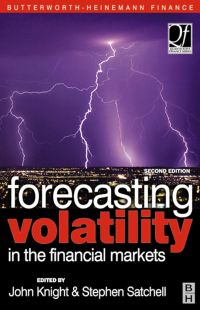Fresh Smoothies Prices and Quantities Fresh Smoothies purchases fresh fruit and vegetables for their smoothies every week. Any produce left over when a new shipment
Fresh Smoothies Prices and Quantities
Fresh Smoothies purchases fresh fruit and vegetables for their smoothies every week. Any produce left over when a new shipment arrives is salvaged and usually used by other companies to produce jams, jellies, and packaged juices. In the case that they dont have enough fresh fruit or vegetables to cover the demand for the week, each store buys the necessary ingredients from local grocery stores at a price higher than the negotiated price with the primary supplier.
Steve is in charge of the companys revenue management strategy and has recently completed a course on data analytics that has caused him to question some company decisions. In particular, he wondered why the company charges the prices they do and why they order the quantities of ingredients. Did they know something he didnt know about the sensitivity of demand to changes in price and the distribution of demand?
After significant debate with Charlie, whose approval was required for pricing changes, Steve finally got approval to do a simple experiment at a single store with a single smoothie flavor: strawberry.
The approved plan included two weeks with a variation in price. The first week, the price would be $4.00; and the second week, the price would be $6.00. All other smoothie prices would remain constant during the two weeks. Historically, the price of the strawberry smoothie had been $5.00; and they had always ordered the ingredients necessary to produce 410 strawberry smoothies each week. To complete the data acquisition, Steve tracked down the sales figures for the previous 30 weeks. During this 30-week time frame, there hadnt been any store-wide promotional sales; and the prices of all smoothie flavors had remained constant. The 30-week sales figures are shown in the table below.
| Week | Sales |
| Week | Sales |
| Week | Sales |
| 1 | 417 |
| 11 | 413 |
| 21 | 352 |
| 2 | 376 |
| 12 | 366 |
| 22 | 398 |
| 3 | 406 |
| 13 | 397 |
| 23 | 404 |
| 4 | 348 |
| 14 | 425 |
| 24 | 405 |
| 5 | 402 |
| 15 | 418 |
| 25 | 468 |
| 6 | 400 |
| 16 | 417 |
| 26 | 379 |
| 7 | 400 |
| 17 | 430 |
| 27 | 408 |
| 8 | 345 |
| 18 | 385 |
| 28 | 443 |
| 9 | 380 |
| 19 | 427 |
| 29 | 359 |
| 10 | 431 |
| 20 | 407 |
| 30 | 432 |
After waiting for what felt like an eternity, at last the experiment was complete and the data compiled. The observed demand for the strawberry smoothie during the two experimental weeks is included in the table below.
| Price | Observed Demand |
| $4.00 | 494 |
| $6.00 | 344 |
Although completing the experiment was satisfying, Steves peers and superiors now expected some results coming from the experiment. Steve hoped he could get enough evidence to support additional price exploration throughout the companys stores and products. He felt like he had a decent amount of information for the demand at a price of $5.00; but two non-$5.00 data points arent a lot to go on. After all, any model used to capture the variation in demand with price changes would have a lot of uncertainty in the parameter estimates. This uncertainty in parameter estimates translates directly into uncertainty about the demand. This demand uncertainty (from model parameter estimates) gets amplified the further the price gets from tested values.
Steve gathered the necessary financial information related to the focal stores strawberry smoothies so he could complete his analysis and make some recommendations. The data he collected are shown in the table below.
| Parameter | Value |
| Ingredient salvage value | $0.25 / unit |
| Supplier ingredient cost | $2.79 / unit |
| Grocery store ingredient cost | $3.95 / unit |
Part A
Develop a model to describe the demand, its randomness, and its dependence on the price.
Part B
What parameters of the model would make it so that a price of $5.00 maximizes Fresh Smoothies expected weekly profits for their strawberry smoothie at the focal store?
Part C
Estimate the parameters of the demand model and capture the information necessary to develop a demand distribution for any given price.
Part D
Use the model to find the optimal: (i) price and (ii) quantity of ingredients to purchase from the primary supplier. The optimal price and quantity are the ones that maximize Fresh Smoothies expected weekly profits for their strawberry smoothie at the focal store.
Part E
Describe your recommendations for a future course of action in pricing strawberry smoothies at the focal store and for other stores and flavors. Also discuss issues not addressed with the analysis of the experiment (and the experiment itself). What other information could Steve obtain from the data that could influence the studys conclusions and recommendations? What analysis and experiments could be completed to get a better picture of the effect of a price change?
Step by Step Solution
There are 3 Steps involved in it
Step: 1

See step-by-step solutions with expert insights and AI powered tools for academic success
Step: 2

Step: 3

Ace Your Homework with AI
Get the answers you need in no time with our AI-driven, step-by-step assistance
Get Started


